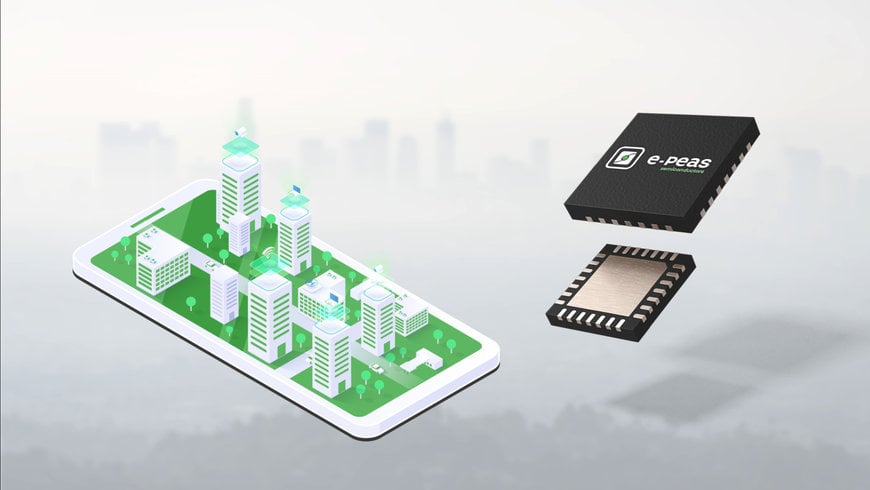www.industryemea.com
22
'20
Written on Modified on
E-PEAS Power Management ICs Designed into Air Pollution Monitoring Hardware
Driving innovation in energy harvesting, e-peas has gained another major endorsement for its cutting-edge technology.

The company’s highly optimised power management ICs are set to feature in a large scale remote monitoring application that is being rolled out across New York.
IoT solutions provider MCCI has incorporated the e-peas AEM10941, which specifically targets solar powered implementations, into a new environmental sensor module that it is about to start deploying. As part of a community-funded project, these sensor nodes will be placed in economically disadvantaged neighbourhoods within the city boroughs of Brooklyn, the Bronx and Harlem, where air pollution levels are extremely high.
The MCCI modules each feature PM2.5 particulate and VOC sensing devices, plus temperature and humidity sensors. Located on utility poles, these compact form factor units will dynamically gather real-time data relating to their surroundings every 6 minutes. This data will be transmitted back to a network hub via LoRaWAN connectivity for subsequent analysis. With prototyping almost completed, the pilot scheme is due to go into operation before the end of the summer.
Thanks to the AEM10941-based energy harvesting circuit, it has been possible to avoid powering the sensor module via a battery (and the inconvenience of battery replacement). This highly advanced e-peas power management IC can deal with the DC power output from up to 7 solar cells and supply hardware with two independent regulated voltages. It can start operating from a very low threshold - needing an input voltage of just 380mV and a 3µW input power. Supplied in a space-saving 28-pin QFN package (with 5mm x 5mm dimensions), the IC incorporates all the active elements needed for an energy harvesting subsystem, including a boost converter and two LDOs. Only 7 passive components (5 capacitors and 2 inductors) are needed to accompany it, thereby keeping the bill-of-materials costs down.
“As we want to carry out analysis at a granular level, the intervals between when data is acquired are very short. The e-peas ICs can start extracting energy at really low voltages, ensuring the power budget requirements of our modules can be fully satisfied,” states Terry Moore, CEO and founder of MCCI. “The company’s track record in remote sensing applications was another important factor, as was the quick turnaround time they were able to support.”
“Our AEM series is continuing to make headway in a variety of different industry sectors, with ICs that are purpose built to attend to the particular demands of photovoltaic, thermal, vibration and RF-based energy sources,” adds Christian Ferrier, CMO at e-peas. “Through this project with MCCI, and others that are currently underway, we will keep on building e-peas’ reputation as the preferred supplier of energy harvesting IC technology.”
www.e-peas.com

